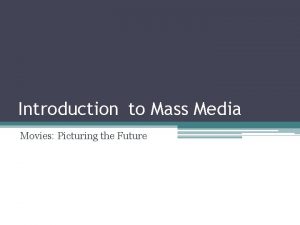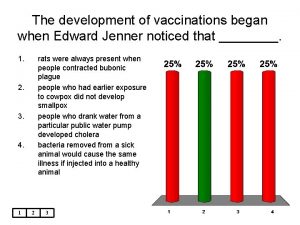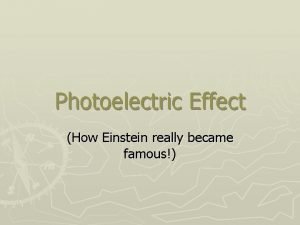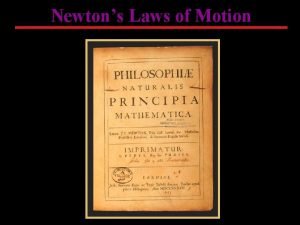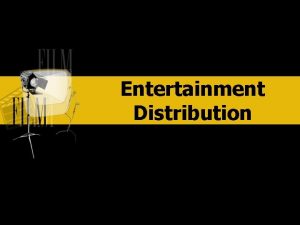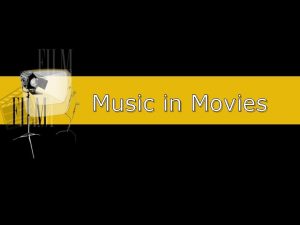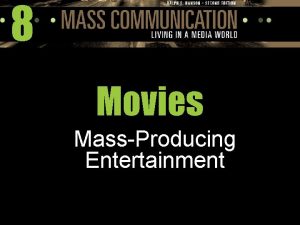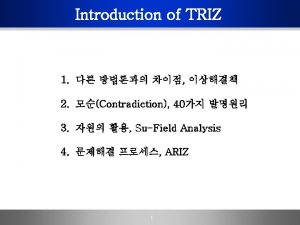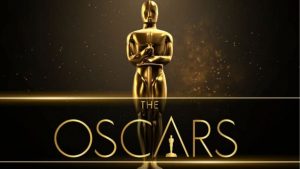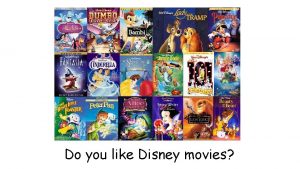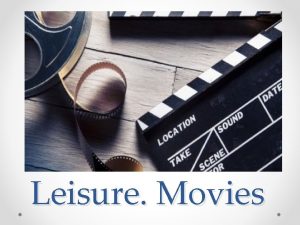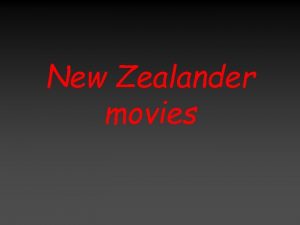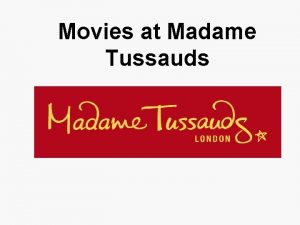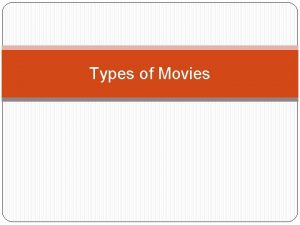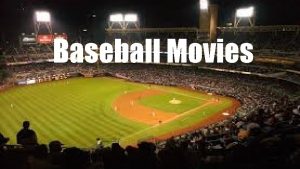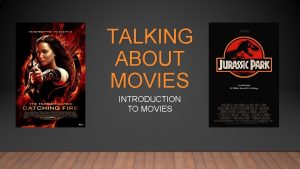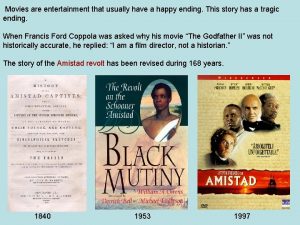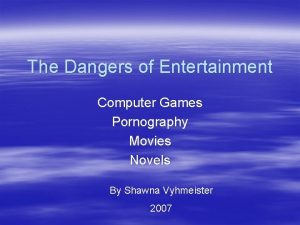Chapter 8 Movies Mass Producing Entertainment Early Movie
































- Slides: 32

Chapter 8 Movies: Mass Producing Entertainment

Early Movie Technology • 1870 s and 1880 s: Marey and Muybridge View

Early Movie Technology • 1870 s and 1880 s: Marey and Muybridge zoopraxiscope View

Early Movie Technology • 1894: Thomas Edison: opens first kinetoscope parlor – manner to watch “moving pictures”, commercial possibilities are opened

Early Movie Technology • Kinetograph: Leonard Cushing Kinetograph 1894

Early Movie Technology • The first U. S. copyright for an identifiable motion picture was given to Edison for Fred Ott's Sneeze. • Edison opens his own film studio called Black Maria

Early Movie Technology • Lumière brothers invent portable movie camera and projector: cinematograph

Early Movie Technology • Early 1900 s: nickelodeon theaters become popular • Lumière brothers: Actualities. Arrival of a Train at La Ciotat

Early Movie Technology • Birth of Cinema

Telling a Story With Film • 1903: Edwin S. Porter directs The Great Train Robbery • Contains 12 separate scenes • Is shot in a variety of locations • Tells a realistic story • Established basic film storytelling conventions • View

D. W. Griffith • • 1915: Birth of a Nation Created the first feature-length film Griffith’s Intolerance required outside funding Era of movie stars started under Griffith

The Studio System • • • Stars worked directly for studios Block bookings Vertical integration Development of talking pictures View

Response to the Studio System • 1919: United Artists created by directors and actors. Aimed to create at least 5 films a year • 1940 s: United States vs. Paramount: Studios owned theatres that only played films they created. Supreme Court ruled this was a violation of antitrust laws

The Blacklist • 1947: HUAC holds hearing on communist influences in Hollywood. • Hollywood Ten resisted testifying, were jailed and blacklisted. • By 1953, as many as 324 were blacklisted, including many prominent screenwriters. • Blacklist continued until 1960 when Hollywood Ten member Dalton Trumbo hired to write Spartacus, Exodus.

Movies React To Television • Movie audiences peak in 1946— 80 million tickets sold per week • By 1953, ticket sales drop to 46 million per week • First round of 3 -D movies, larger format theaters • Growing popularity of color • Growth of multiplex theaters

The Blockbuster Era • 1975: Jaws creates the summer blockbuster • Succession of big-budget films with very wide release • 2009– 2010: Avatar had biggest box office to date • 1939: Gone With The Wind sold the most tickets • 1990 s: Home video becomes as important as theatrical release

The Blockbuster Era • Visit Box. Office. Mojo. com • Take a look at the Yearly Box Office what films have you seen off this list • Next, look at All Time. Are you surprised by some of the records. Choose a couple and explain.

Digital Production & Projection • 1977: Star Wars brings computer-controlled cameras to movie making.

Digital Production & Projection • 2004: Sky Captain and the World of Tomorrow becomes first major film to have all-digital sets.

Digital Production & Projection • 2007: 300 shows that a movie with digital sets can be successful.

Digital Production & Projection • Industrial Light & Magic ILM • Late 2009– 2010: Digital and 3 -D digital projection grow in popularity.

What Makes a Movie Profitable? Make a big budget film with marketing tie-ins that sells lots of tickets Or…

The Blockbuster Era • Visit Box. Office. Mojo. com • Look at the Daily Gross – Research Paranormal Activity 4. What can you tell about the production of this movie that is largely different from say Skyfall

What Makes a Movie Profitable? Make a movie with • A small budget • A clear target audience • Have a modest box office • Make a great return on investment • Think High School Musical 3, Little Miss Sunshine, Paranormal Activity

Movies & Censorship • 1920 s: Birth of the Production Code (Hays Code) Named after Will H. Hays • Attempting to avoid local censorship rules • Strict rules on sex, profanity, violence

Failure of Code • 1960 s: movies released without code approval • 1968: MPAA launches movie rating system

Ratings • • • Original Ratings G – General audiences M – Mature audiences R - Restricted X – No one under age 17 admitted • Today • G – General audiences • PG – Parental guidance suggested • PG-13 – Parents strongly cautioned • R – Restricted • NC-17: No one under age 17 admitted

Ratings • Visit Film. Ratings. com • Find a film that you may have seen in the database – do you agree with the rating it received? • Do films have to be rated? • Who rates the films? • If a filmmaker does not like the rating what can they do?

Ratings • Are movies hurt by directors cutting scenes in order to get an “R” rating? Should there be an “A” rating that indicates that a movie is for adults only but is milder than a NC-17?

Movie Revenue Sources • Domestic box office • International distribution rights • Pay-per-view rights • Premium cable channel rights • • • Network television Home video Book rights Toys and clothes Product placement

Movies and the Long Tail • Online promotion • Netflix and other online-based distribution systems • Availability of small, obscure films in every market, not just cities

Popularity of Bollywood Films • World’s biggest source of movies based in Mumbai, India • Big musical numbers cross language barriers • Having influence on western films • Slumdog Millionaire
 Mass media movies
Mass media movies Windows live movie maker add music
Windows live movie maker add music Early cpr and early defibrillation can: *
Early cpr and early defibrillation can: * Accel entertainment jobs
Accel entertainment jobs Sass sports marketing
Sass sports marketing Chapter 7 sports and entertainment marketing
Chapter 7 sports and entertainment marketing Sports and entertainment marketing 1
Sports and entertainment marketing 1 Chapter 2 sports and entertainment marketing
Chapter 2 sports and entertainment marketing Chapter 7 sports and entertainment marketing
Chapter 7 sports and entertainment marketing Differences between games and sports
Differences between games and sports Entertainment means
Entertainment means Chapter 7 sports and entertainment marketing
Chapter 7 sports and entertainment marketing Directions for producing mhcs come from
Directions for producing mhcs come from An ion source is producing 6li ions
An ion source is producing 6li ions Situation relating questions in research examples
Situation relating questions in research examples A factory has 20 assembly line producing
A factory has 20 assembly line producing Kumar is producing the photoelectric effect by using
Kumar is producing the photoelectric effect by using Process specifications
Process specifications A goal of producing process specifications is to:
A goal of producing process specifications is to: Seeded vascular plants
Seeded vascular plants Producing for dummies
Producing for dummies Gametophytes have gamete-producing organs called _____.
Gametophytes have gamete-producing organs called _____. When a natural disaster destroys a stable ecosystem
When a natural disaster destroys a stable ecosystem A goal of producing process specifications is to:
A goal of producing process specifications is to: A goal of producing process specifications is to:
A goal of producing process specifications is to: The equipment
The equipment Stoichiometry example
Stoichiometry example What is mass number
What is mass number Relative atomic mass of beryllium
Relative atomic mass of beryllium Percentage composition by mass
Percentage composition by mass Inertial mass vs gravitational mass
Inertial mass vs gravitational mass Grams to moles conversion
Grams to moles conversion Molecules to mass
Molecules to mass
